In an age where information flows ceaselessly and words hold immense power, harnessing the art of word cloud and visualization becomes paramount. These tools, often overlooked but incredibly insightful, enable us to distill vast volumes of text into visually captivating representations that speak volumes. In this comprehensive article, we delve into the world of word clouds and visualization, exploring their significance, the best tools, creative examples, and the impact they have on data representation.
Word Cloud
Painting with Words: The Essence of Word Clouds

Word clouds are artistic representations of text data, where words from a given source are arranged in a visually striking manner. The size of each word in the cloud is proportional to its frequency in the source text. These visually engaging creations offer an immediate glimpse into the key themes and concepts present in a body of text.
Word clouds find applications in various fields, from content analysis and data visualization to creative art and marketing. They are ideal for summarizing text content succinctly, making them accessible and engaging for a wide audience. Whether you’re analyzing customer feedback, exploring literature, or designing visually captivating graphics, word clouds have you covered.
Word Cloud Generator
Word cloud generators are ingenious tools that transform raw text data into visually appealing word clouds effortlessly. These tools automate the process of word selection, sizing, and layout, saving time and ensuring a visually pleasing result.
One of the most popular word cloud generators is Wordle, which allows users to input their text or simply paste a URL to create a word cloud in seconds. Users can customize fonts, colors, and layouts to match their preferences and needs. Additionally, word cloud generators often offer features like stop-word removal (common words that don’t contribute to the cloud) and the ability to exclude specific words or phrases.
These generators democratize the creation of word clouds, making them accessible to anyone, from data analysts to artists, bloggers, and educators.
Best Word Cloud Generator
When seeking the best word cloud generator, it’s essential to consider factors such as customization options, ease of use, and the quality of the visual output. While Wordle is undoubtedly a popular choice, there are other noteworthy contenders in the field.
- CommentsAnalytics.com : A fully automated keyword extraction and word cloud generator for your input bunch of text. It also provides charts of top keywords count and their corresponding sentiment in your input texts.
- TagCrowd: This user-friendly generator offers advanced customization options, including the ability to include or exclude words, define word frequency thresholds, and choose from various layouts.
- WordArt.com: WordArt.com combines word clouds with creative typography, allowing users to generate stunning visuals with customizable fonts, colors, and shapes.
- WordClouds.com: A web-based tool that offers straightforward word cloud creation with options to adjust word frequency thresholds and exclude common words.
- WordItOut: Known for its simplicity and ease of use, WordItOut allows users to create word clouds quickly and offers various customization options.
- WordSift: Particularly useful for educators, WordSift not only generates word clouds but also provides definitions and contextual sentences for each word.
Ultimately, the best word cloud generator depends on your specific needs and preferences. Whether you prioritize artistic flair or advanced customization, there’s a tool to suit your requirements.
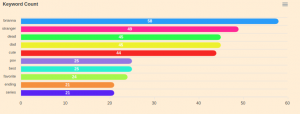
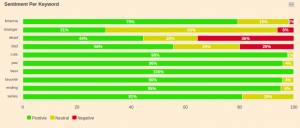
WordClouds.com
WordClouds.com is an online platform that offers a user-friendly and creative way to generate word clouds from text. Word clouds are visually engaging representations of text data, where the frequency of words is depicted by their size and prominence. With WordClouds.com, users can effortlessly transform plain text, speeches, articles, or any written content into captivating visual word clouds. The platform provides a range of customization options, allowing users to select different shapes, colors, and fonts, giving them the flexibility to tailor their word clouds to match their content or design preferences. Whether it’s for educational purposes, data visualization, or adding a unique touch to presentations, WordClouds.com makes it simple to turn words into striking visual representations, adding an extra layer of depth to text analysis and communication.
Cloud Text
Cloud Text is a versatile and dynamic cloud-based service that empowers businesses and developers to work with text data efficiently and effectively sometimes referred to “TagCloud”. Whether it’s natural language processing, sentiment analysis, text summarization, or language translation, Cloud Text offers a wide range of tools and functionalities. By harnessing the power of this service, organizations can extract valuable insights from textual data, improve customer interactions, and automate various text-related tasks. With the scalability and accessibility of the cloud, Cloud Text simplifies text processing, making it a valuable asset in the modern digital landscape, where text data plays a pivotal role in communication, analysis, and decision-making.
TagCloud
A TagCloud, also known as a word cloud or word cloud visualization, is a graphical representation of text data in which words from a given source are displayed in varying sizes and colors. The size of each word in the TagCloud corresponds to its frequency or importance within the text, with larger and bolder words indicating higher frequency or significance. TagClouds are widely used for visualizing and summarizing the key terms, topics, or tags within a body of text, making it easier to identify prevalent themes and trends. They find applications in various fields, from data analysis and content marketing to information retrieval and text mining, providing a quick and intuitive way to grasp the essential elements of a document or dataset at a glance.
Keyword Visualization
Beyond Words: The Power of Keyword Visualization
“Visualization gives you answers to questions you didn’t know you had.” — Ben Schneiderman
Keyword visualization extends the concept of word clouds by adding layers of analysis and interactivity. It transforms textual data into dynamic visual representations that facilitate exploration, analysis, and insight generation.
This approach is particularly useful in fields like search engine optimization (SEO), content marketing, and competitive analysis. By visualizing keyword trends and relationships, professionals can make informed decisions to enhance their online presence and marketing strategies.
Keyword visualization tools like Google Trends, Moz’s Keyword Explorer, and SEMrush enable users to explore keyword popularity, seasonal trends, and competition. These tools provide invaluable insights for businesses and content creators looking to optimize their online visibility.
Text Visualization Tools
Unleashing the Potential: Text Visualization Tools
“Visualization is really about external cognition, meaning cognition that happens outside of the human brain.” — Ben Shneiderman
Text visualization tools take data representation to the next level by offering a range of techniques and options for uncovering hidden insights within text. These tools are invaluable for researchers, analysts, and storytellers seeking to convey complex information effectively.
One such tool is Voyant, a web-based application that allows users to upload and analyze text data. Voyant provides an array of visualization options, including word clouds, trend graphs, and distribution plots, making it a versatile choice for exploring textual data.
Another noteworthy tool is Tableau, which empowers users to create interactive dashboards and reports that blend textual and numerical data. This tool facilitates in-depth analysis and storytelling, enabling users to uncover patterns and correlations within their text data.
These text visualization tools bridge the gap between raw text and meaningful insights, offering a visual narrative that engages audiences and informs decision-making.
Creative Word Cloud Examples
Art Meets Data: Creative Word Cloud Examples
“Creativity is intelligence having fun.” — Albert Einstein
Word clouds need not be confined to the realms of data analysis and research. They also serve as a canvas for creative expression, where words transform into art. Below are some innovative and imaginative examples of word cloud artistry:
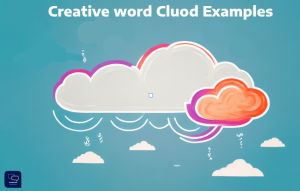
- Literary Word Clouds: Create word clouds from famous literary works, highlighting the most frequently used words or themes in a novel. These visualizations offer new perspectives on beloved texts.
- Personal Resolutions: Craft a word cloud of your New Year’s resolutions or personal goals. The resulting visual can serve as a daily reminder of your aspirations.
- Wedding Vows: Commemorate your wedding vows in a word cloud, turning heartfelt promises into a beautiful piece of art.
- Song Lyrics: Analyze the lyrics of your favorite songs to visualize recurring themes and emotions. It’s a creative way to connect with music on a deeper level.
- Historical Documents: Analyze historical speeches or documents, such as the Declaration of Independence, to highlight key concepts and ideas that shaped nations.
- Recipes: Transform a recipe into a word cloud, emphasizing the most critical ingredients and steps. It’s a visually appealing way to share culinary creations.
- Travel Memories: Create word clouds from travel journals or diaries, capturing the essence of different destinations through the words used to describe them.
- Book Reviews: Analyze book reviews to uncover common sentiments and opinions among readers.
These creative word cloud examples showcase the versatility of this visualization technique, allowing words to transcend their ordinary roles and become sources of inspiration and beauty.
Animated Word Cloud
Breathing Life into Words: Animated Word Clouds
Animated word clouds add an extra layer of dynamism to text visualization, bringing words to life through motion and change. These animations are engaging and captivating, making them a valuable tool for presentations, educational content, and storytelling.
One compelling example of animated word clouds is the visualization of speeches or interviews over time. As the speaker progresses, the word cloud evolves, highlighting the evolving themes and emphasis throughout the discourse.
Another use case is in the context of social media trends. Animated word clouds can track the changing popularity of hashtags or keywords in real-time, providing viewers with insights into ongoing discussions and trends.
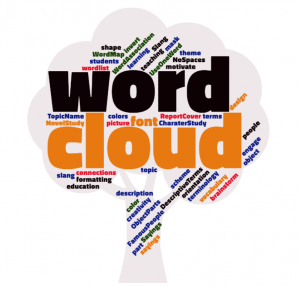
Data Visualization Design
The Art of Representation: Data Visualization Design
“Data is the sword of the 21st century; those who wield it well, the Samurai.” — Jonathan Rosenberg
Data visualization design is a multidisciplinary field that encompasses the art and science of representing data visually. It encompasses a wide range of techniques and tools, including word clouds, to communicate information effectively.
Effective data visualization design adheres to principles that ensure clarity, accuracy, and engagement. Some essential considerations in this field include:
- Audience Understanding: Understanding the needs and expectations of your audience is paramount. Tailor your visualization to convey the message effectively to your target audience.
- Data Integrity: Ensure that the data used is accurate and relevant. Misleading visualizations can lead to erroneous conclusions.
- Simplicity: Simplicity in design often leads to better comprehension. Avoid clutter and unnecessary embellishments.
- Color Choice: Selecting appropriate colors for your visualization is crucial. Color can convey meaning, but it should not overshadow the data.
- Interactivity: For digital visualizations, consider adding interactive elements that allow users to explore the data on their own.
- Storytelling: Craft a narrative around your visualization to guide viewers through the data and help them draw meaningful insights.
- Accessibility: Ensure that your visualizations are accessible to all, including individuals with disabilities.
Ultimately, data visualization design aims to transform raw data into a visual language that is not only informative but also engaging and memorable.
Word Graphics
Beyond Text: The World of Word Graphics
Word graphics expand on the idea of word clouds by incorporating text into broader visual compositions. These visualizations combine the power of words with artistic design to create impactful and thought-provoking representations.
One notable example of word graphics is the use of text to form shapes or images. For instance, the text of a famous speech can be arranged to create the silhouette of the speaker, adding a layer of symbolism and meaning to the visual.
Another application of word graphics is in advertising and branding. Companies often use text-based visuals to convey their brand message creatively. These visuals can be memorable and resonate with audiences, leaving a lasting impression.
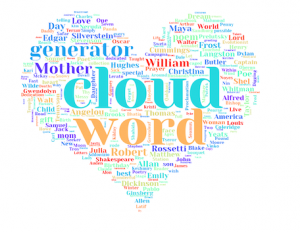
Word Art Design
Crafting Art from Letters: The World of Word Art Design
Word art design transforms text into a visual masterpiece, where letters and words become intricate patterns, shapes, and artworks. This form of visual expression combines typography, design, and creativity to convey messages in an artistic and captivating manner.
Typography plays a pivotal role in word art design. Designers carefully select fonts, sizes, and arrangements to create visually striking compositions. The words themselves may be the focus, or they may serve as elements within a larger design.
Word art design finds its place in a variety of contexts, from posters and advertisements to logos, book covers, and even tattoos. It offers a unique and personal way to communicate messages, evoke emotions, and leave a lasting impression.
Word Drawings
Artistic Expression Through Words: Word Drawings
Word drawings take word art to another level by integrating text into intricate illustrations, where words become an integral part of the visual narrative. This artistic form blends the power of storytelling with visual aesthetics, creating captivating compositions that convey complex ideas.
One well-known example of word drawings is the work of calligram artists. These artists create images where the words themselves form the subject matter. For instance, a calligram of a tree may be composed entirely of the word “tree,” with the branches, leaves, and roots meticulously crafted from the letters.
Word drawings also find their place in conceptual art, where the arrangement of words within a visual composition explores themes, emotions, and ideas. Artists often use this medium to challenge perceptions and invite viewers to engage with the artwork on a deeper level.
Cloud Maker
Crafting Clouds of Words: The Role of Cloud Makers
Cloud makers, or word cloud generators, are the architects behind the scenes, responsible for crafting visually appealing representations from raw text data. These tools empower users to transform words into art, insight, and communication.
Cloud makers employ algorithms and design principles to arrange words, determine their size, and select colors. They also provide users with customization options, allowing them to tailor the visual to their specific needs and preferences.
One of the fascinating aspects of cloud makers is their ability to democratize data visualization and artistic expression. They enable individuals and organizations to create compelling word clouds without the need for specialized design skills or technical expertise.

Cloudword Codes
Deciphering the Code of Word Clouds
Cloudword codes, often referred to as word cloud codes, are the underlying instructions that determine how words are selected, sized, and arranged within a word cloud. These codes are essential for fine-tuning the appearance and content of word clouds to meet specific requirements.
For example, a code can instruct the word cloud generator to exclude common stop words like “the” and “and” or specify a minimum word frequency for inclusion. Codes can also dictate the font, color scheme, and layout of the word cloud.
Understanding and manipulating cloudword codes offers users greater control over the visual output of word cloud generators, allowing for highly customized and tailored word clouds that effectively convey their intended messages.
In conclusion, word clouds and visualization are powerful tools that breathe life into words and data. They enable us to distill complex information into engaging visuals, whether for data analysis, storytelling, or artistic expression. As technology continues to advance, the boundaries of what we can achieve with word clouds and visualization continue to expand, offering new opportunities for creativity, understanding, and communication. Whether you’re an analyst, artist, marketer, or educator, the world of word clouds and visualization invites you to explore, create, and share in the beauty and insight of words brought to life.
Wow, awesome blog format! How lengthy have you ever been blogging for?
you made blogging look easy. The entire look of your web site is fantastic, let alone the content!
You can see similar: najlepszy sklep and here e-commerce
[url=http://happyfamilymedicalstore.online/]legit pharmacy websites[/url]